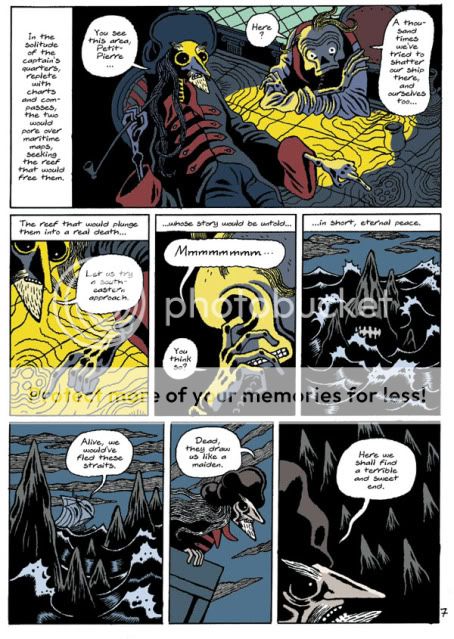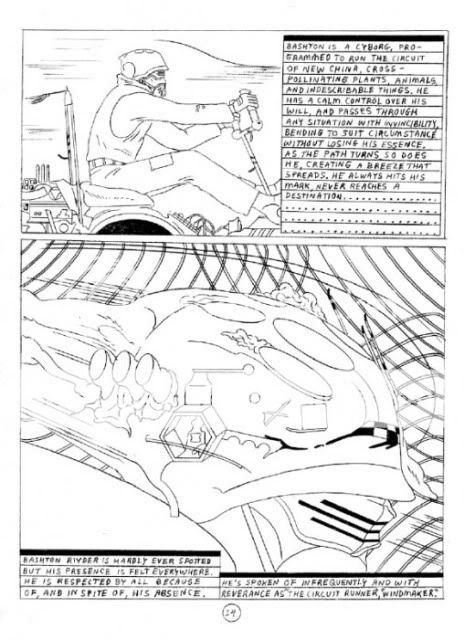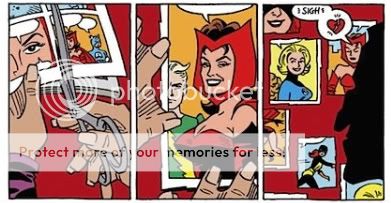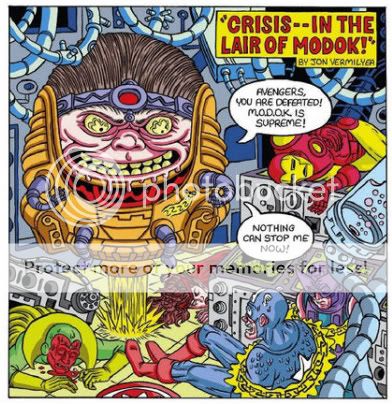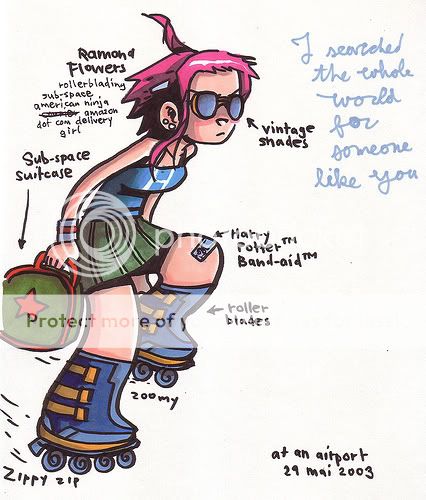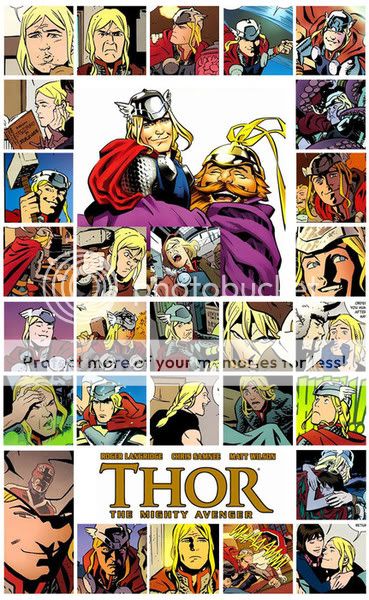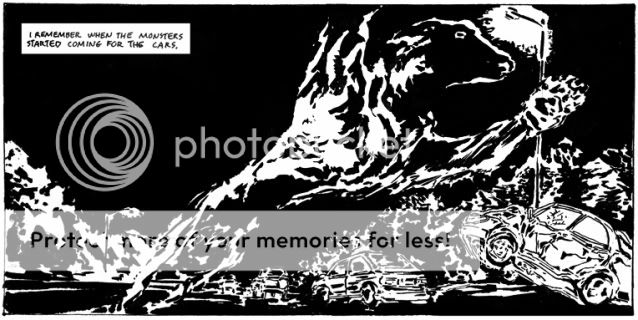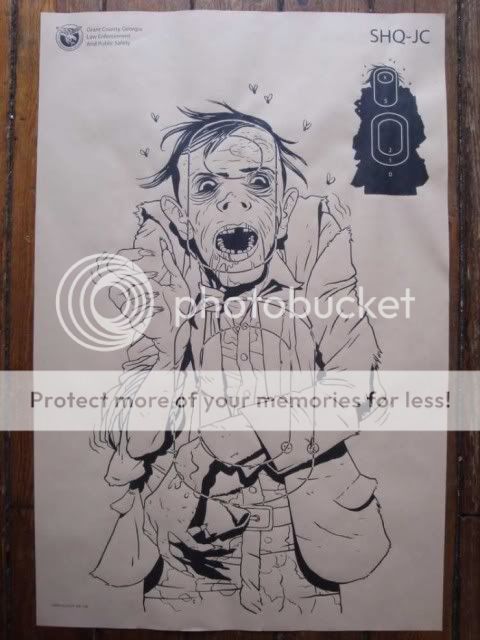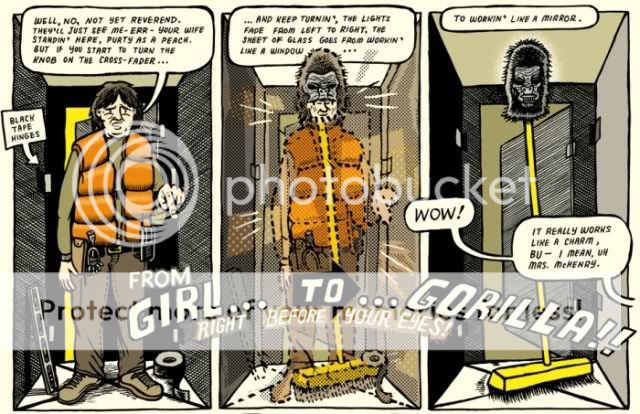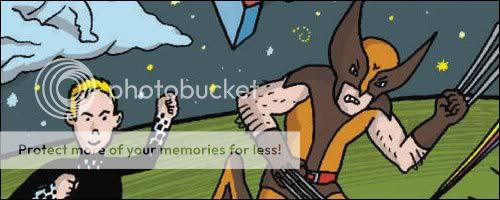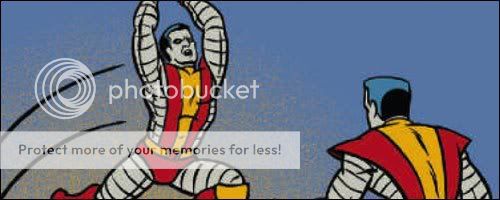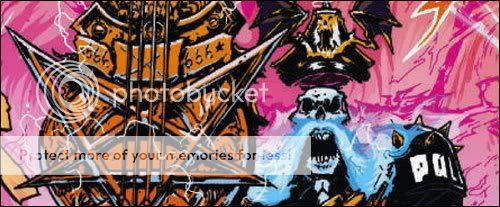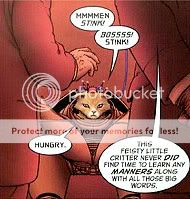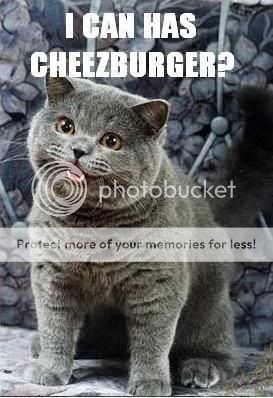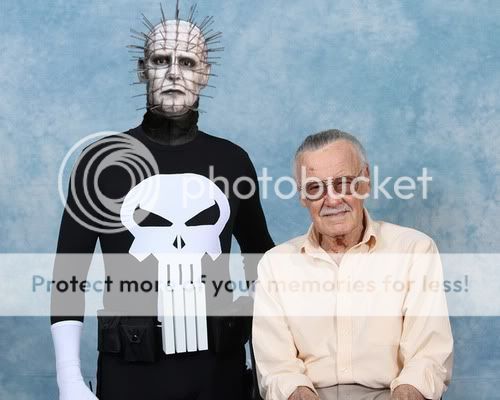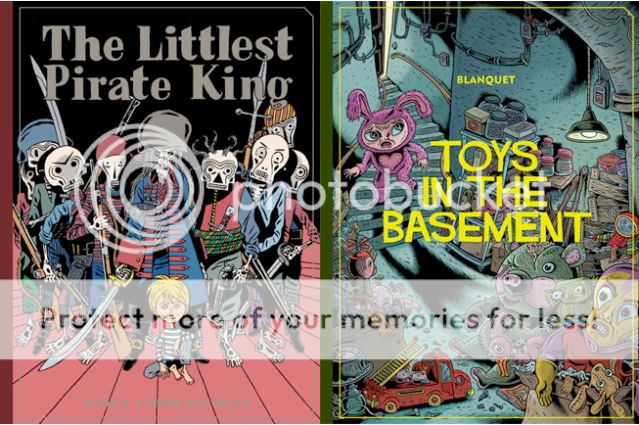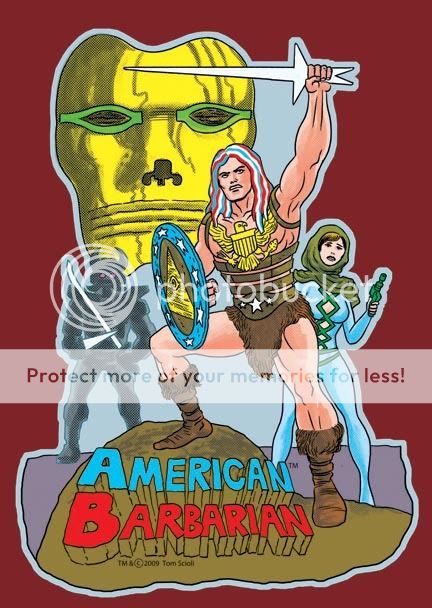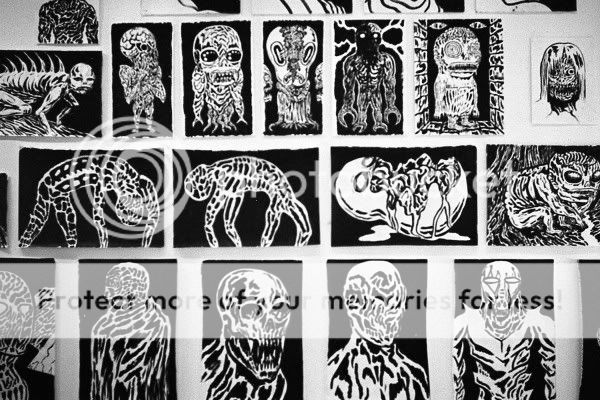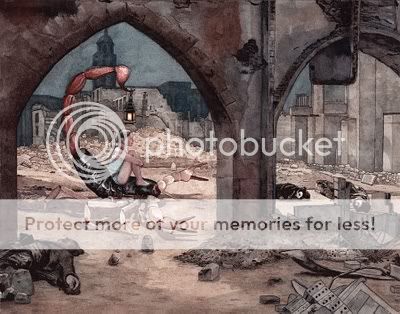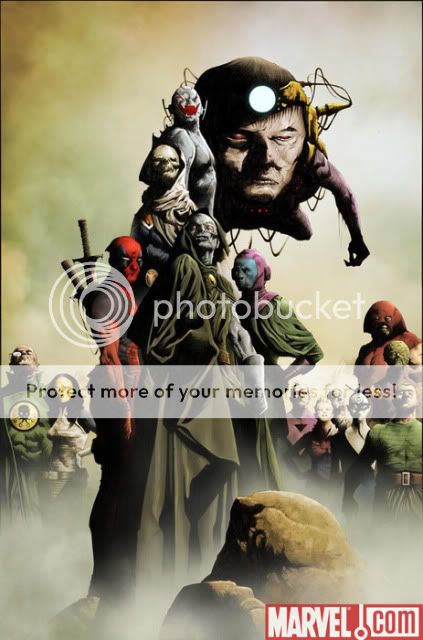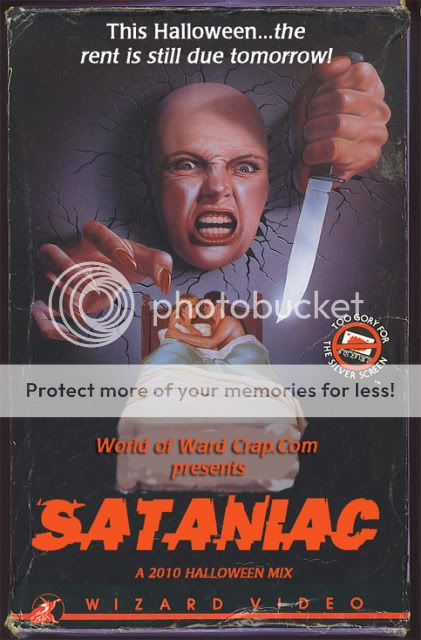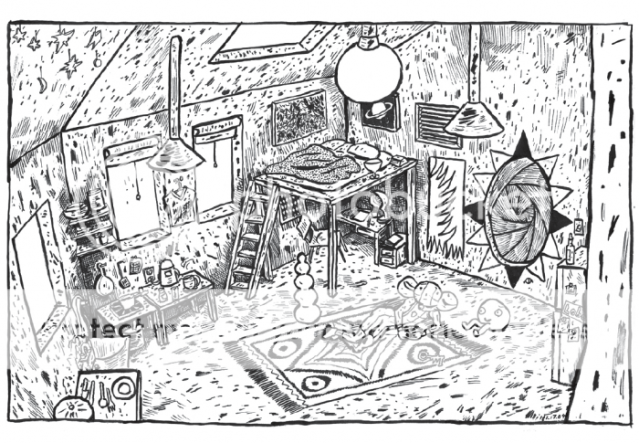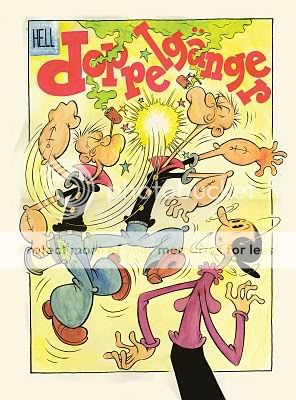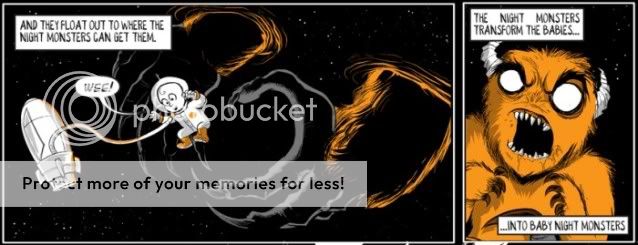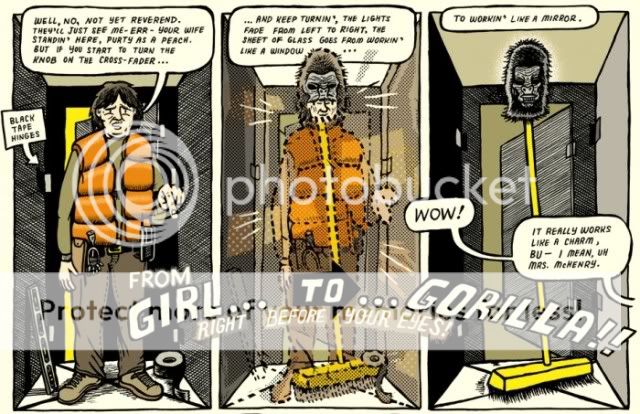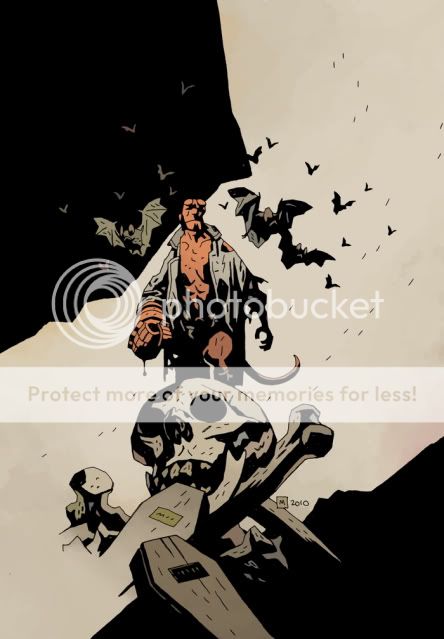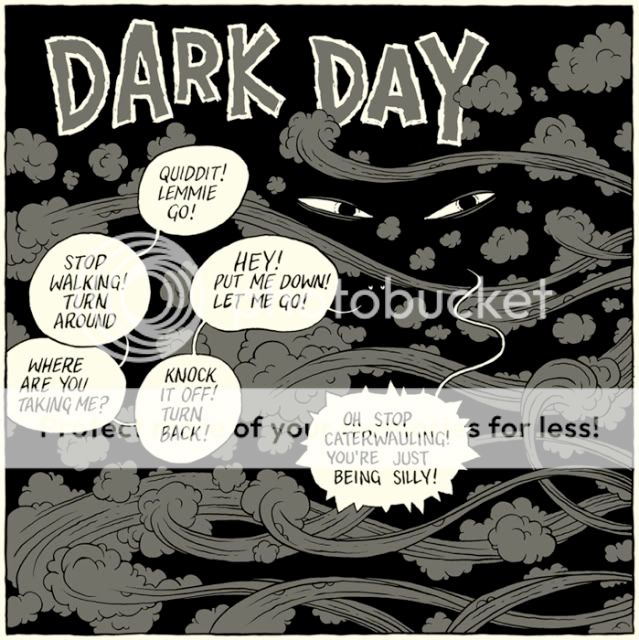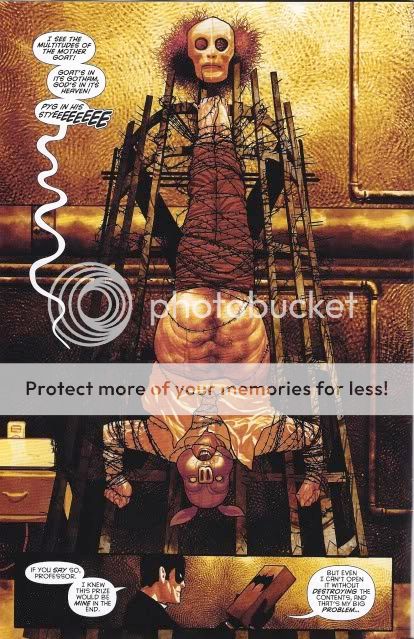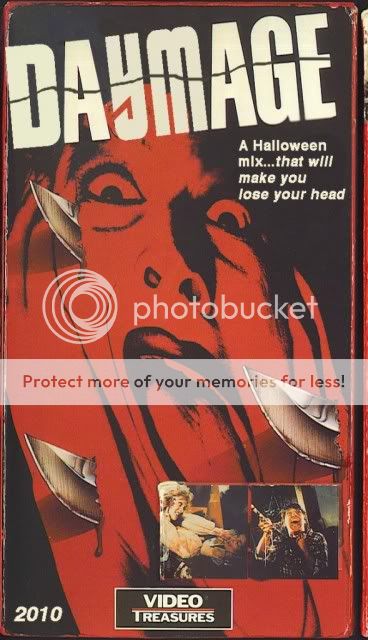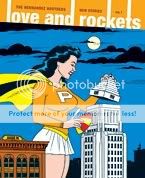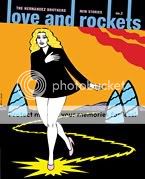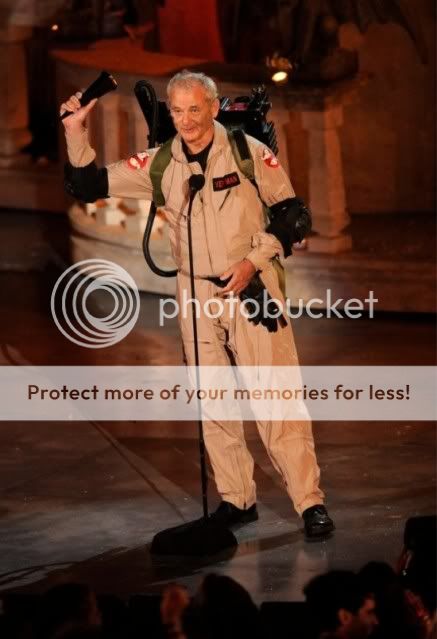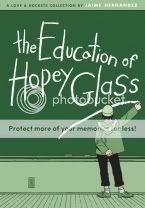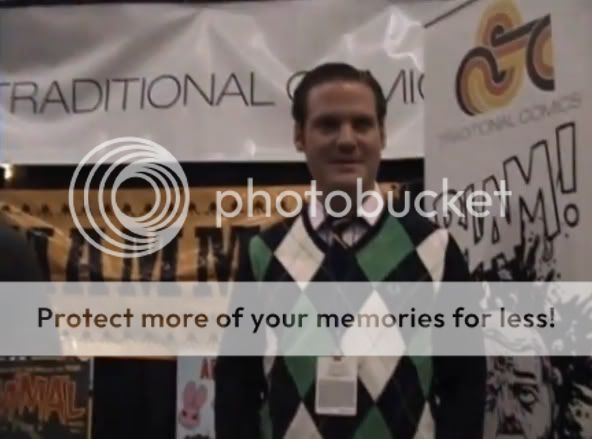Archive for October 31, 2010
Welcome
October 31, 2010It’s here. It’s finally here!
Programming note
October 29, 2010Comments are down for the weekend, most likely, to make something vital for the future of this blog easier to do. Thank you for your patience!
Carnival of souls
October 29, 2010* Today on Robot 666: Matt Maxwell on John Coulthart’s art for Call of Cthulhu;
* a preview of David B.’s The Littlest Pirate King;
* a trailer for the pre-Code horror and crime comics anthology The Horror! The Horror! (about which more, pro and con, in this Comics Comics post and very lively comment thread);
* Today on Robot 6, a couple of “maybe you missed it”s: Tim Callahan takes a look at Powr Mastrs 3 and If ‘n Oof;
* and Frank Santoro on the Watchmen grid.
* Lookit, Fantagraphics previews the Strange Tales II contributions of Gilbert and Jaime Hernandez! LOVE AND ROCKTOBER marches on! And hey, Jon Vermilyea too! I’m happy to be involved with this series, and some of the folks who made it in were my suggestions, I’m proud to say.
* I hear nothing but good things about Roger Langridge and Chris Samnee’s Thor the Mighty Avenger.
* Curt Pucell on Robert Kirkman and Charlie Adlard’s The Walking Dead Vols. 9-12. It’s interesting to see how this stuff reads for someone who first read a collection that contained issues #1-58 between one set of covers.
* Now this is a first, for writers of my acquaintance: Sean Belcher liked the Friday the 13th remake. I remember being really impressed by how quickly and unstoppably Jason was moving in that first trailer, and then never hearing anything good about the movie ever again.
* This is just really fine writing: Tom Ewing on Sinead O’Connor’s “Nothing Compares 2 U.” The way he unpacks her vocal delivery? That’s what music criticism should be all the time, basically.
* Here’s a nice thoughtful piece by Amypoodle of the Mindless Ones on Batman the Dark Knight vs. Batman the Caped Crusader. Even as a kid I thought that one of the greatest things about Batman was that he fit so convincingly in all sorts of differently flavored stories–straight-up superheroes, science fiction, horror, gritty crime/noir stuff, mysteries, whatever. Keep in mind, The Dark Knight Returns totally featured flying talking robot dolls.
* Bryan Ferry does “Song to the Siren” as only he can. (Via Tom Ewing.)
A Halloween gift from me to you
October 28, 2010Isaac Moylan and I made a new comic called “I Remember When the Monsters Started Coming for the Cars.” You can read it on Isaac’s website through the link. I hope you enjoy it!
Carnival of souls
October 28, 2010* Programming note: As I mentioned in my (alas!) delayed LOVE AND ROCKTOBER review of Heartbreak Soup earlier today, I am experiencing computer problems for which I do not anticipate a timely resolution. So you can probably expect my regular blogging to be a bit erratic, linkblogging to be slightly behind the curve, comment spam to linger a bit longer, and accidentally deleted comments to remain in limbo for longer too. For once this has nothing to do with my blogging platform–it’s laptop-related. Thank you for your patience!
* Today on Robot 666: Whoa, Walking Dead prints from Jordan Crane, Lisa Hanawalt, Johnny Ryan, and Jon Vermilyea;
* last chance to buy rad Johnny Ryan horror/monster/etc. prints (Whammies not encluded);
* and here’s that Dan Zettwoch church haunted house strip I thought went up earlier in the week;
* Today on Robot 6: Dammit, the great Josh Cotter was involved in an apartment fire, though fortunately the physical and financial impact on him and his loved ones could have been much much worse;
* Here’s a trio of Strange Tales II sneak previews by David Heatley, Paul Hornschemeier, and Sheldon Vella;
* Grant Morrison invented LOLcats in We3;
* How big a deal to New Zealand is The Hobbit? They’re rewriting laws to make it easier for the movies to shoot there, that’s how big.
* Caprica is cancelled. Oddly, now I feel more incentivized to catch up with the dreary overwrought thing.
* Zom of the Mindless Ones didn’t like the pilot episode for The Walking Dead, and his specific complaint makes me nervous.
* I enjoyed my pal TJ Dietsch’s take on Charles Burns’s masterpiece Black Hole, particularly the way he keys in on the disorienting physical impact of the artwork.
* Jason Stackhouse from True Blood as Charles Manson? You know, I can see it. It’s in the eyes–that evil little fuck has beady, mischievous eyes.
* “One of the greatest sequences in modern horror, period.” Seconded.
* Speaking of Jason Adams, whose quote I just quoted, he caught something I missed: Cinefamily’s 100 Most Outrageous Kills screening tonight First Kramers Ergot, now this–what will the Harkhams contribute to society next???
100 Kills trailer! from Hadrian Belove on Vimeo.
LOVE AND ROCKTOBER | Comics Time: Heartbreak Soup
October 28, 2010Heartbreak Soup
(Love and Rockets Library: Palomar, Book One)
Gilbert Hernandez, writer/artist
Fantagraphics, 2007
292 pages
$14.95
(Programming Note: Due to technical difficulties, I was unable to post this review during the regularly scheduled Comics Time slot on Wednesday of this week. This is the first time I’ve missed a Comics Time deadline, scheduled time off aside, in probably two years, and I’m pretty bummed. My hope is to resume the regular MWF schedule beginning tomorrow, but delays or erratic scheduling may continue until the issue is resolved. I apologize for the interruption in service. Anyway…)
The great temptation when discussing Los Bros Hernandez, and it’s a temptation I’ve succumbed to, is to operate under the assumption that they’re both trying to do basically the same thing, only one of them is better than the other at it. Now, obviously, they are doing many of the same things. They’re brothers who co-founded a series they share in which they tell the sprawling saga of groups of (mostly) Latin American (mostly) young adults that unfold over (mostly) real time, dealing frankly with issues of sex, community, and mortality, starring women who are the closest alternative comics have come to generating sex symbols, and utilizing striking black and white art and inventive, challenging pacing. If that’s all you’re going by (and granted, it’s a lot!), then it’s almost irresistible to point to an element you feel one brother has over the other–Jaime’s incorporation of poster-ready design into his visual storytelling, say, or Gilbert’s magical-realist literary panache–and call him the victor.
But a) much as we comics folks love looking at absolutely everything otherwise, it’s really not a “who’d win in a fight” situation, and b) my re-read of Heartbreak Soup has me more convinced than other that the differences between Beto and Xaime are not differences of degree, but differences of kind.
Let’s talk about the art first. This is the arena where Jaime is most frequently said to have it over Gilbert. And indeed, I can happily imagine a day spent doing nothing but looking at drawings of Terry Downe or Doyle Blackburn. That smooth line, those sumptuous, propulsive blacks, those enormously appealing and endearing character designs–it really is eye candy, in the best sense of that term. But a key goal of Jaime’s art, besides being pleasant to look at, is pop. Not in the sense of “pop art,” although I think that’s a major element and not just due to the occasional overt Lichtenstein homage, but in the sense that they pop off the page. Those blacks fill in space in a way designed to sharply foreground the figures and objects Jaime wants you to focus on or remember, something his sharp, slick line abets. When I picture Jaime panels, I tend to picture the characters are arrayed in a line from left to right against some sort of horizontally oriented background like a car or a wall, like actors (or punk rockers) on a stage. Moreover, he tends to draw his characters in poses and facial expressions that come across as, well, poses–the precise moment at which whatever they’re feeling or thinking or saying or doing is communicated most clearly, so that that thing pops off the page. The overall effect is that there’s them in the spotlight, and then there’s the other stuff against which that spotlight is defined.
By contrast, when I picture Beto panels, I picture someone more or less standing around, usually with one or more other characters milling around as well, with the house-lined streets and intersections of Palomar extending out to the back left and back right. The very setting of his stories is one through which his characters are constantly walking to get from one place to another; I couldn’t draw you a map of Palomar or anything like that, but I feel like I’ve been walked through its streets much more than I can say that of Hoppers. Moreover there’s a casual element to Gilbert’s imagery that Jaime’s more compositionally calibrated panels don’t have. Beto’s line is rubbery, and complimented not by masterful fields of smooth, clean black but by shading and stippling that feels almost dusty. His character designs famously overemphasize flaws and virtues alike, and have a uniformly heavy-lidded weight to them; my wife simply describes his characters as “hard.” It’s tough to imagine spending a pleasant few hours staring even at Tonantzin or Israel the way you might at Maggie or Rand Race. And when characters are depicted for maximum impact, it feels like it’s being done through great force of effort on Gilbert’s part rather than with the effortless, effervescent precision with which Jaime does it. It’s also almost always either something the characters in question are doing on purpose to impress someone else, or a shot of them as seen by someone who they’ve impressed unwittingly. The overall effect feels calculated more for immersion than impact.
Then there are the stories and subject matter. One difference is obvious from the start: Jaime had a couple-issue jump on his brother in terms of beginning his magnum opus, but the delay gave Gilbert the opportunity to draw a bright line between his science-fiction work and his (occasionally magical) realist material. But beyond that, Gilbert very rapidly jumps his action forward about ten years or so from the first major story to the next, while Jaime’s almost resolutely marches forward in sync with our own real-world timeline. Jaime presents material from the past largely in the context of memory and how it intrudes upon and influences us; arguably the past’s on-again off-again love affair with the present is even more central to the Locas strips than Maggie and Hopey’s. Gilbert, however, doesn’t usually view stories from back in the day through that psychological lens. They tend to be presented as discreet tales, filling in backstory, spotlighting a character or a relationship, illuminating a part of Palomar we haven’t seen, depicting someone or something lost to time. Jaime’s interest in the past is primarily internal in its effect; Gilbert’s is primarily epic.
Particularly in light of their recent work, there’s another difference between Gilbert and Jaime worth pointing out. Jaime’s work is studded with sit-up-and-take-notice stories, and his most harrowing stuff–“The Death of Speedy Ortiz,” “Flies on the Ceiling,” and now “Browntown/The Love Bunglers”–tends to be among them. But when you hit “The Death of Speedy,” it’s not as though it establishes the tone for the rest of the series. It’s an exception, not a rule. “Locas” tends to be lighthearted even though what it’s really about–friendship, sexuality, identity, adulthood–is actually quite serious.
By contrast, the harshness, seediness, and bleakness of the world of Palomar and of Gilbert’s work generally–the love many of his characters feel for one another notwithstanding–tends to be what first comes to mind when I think of his comics. Yet Heatbreak Soup struck me for how good-natured it feels, up until the very end. Yes, sex is presented from the very first strip as a magnetic force with the potential for incalculable damage, and the book often does feel like “horniness punctuated by the occasional physical assault.” But centering the material on good-hearted Heraclio, unpredictable Luba, and packs of sweetly belligerent little kids and teenagers goes a long way to making everything feel funny, even when you’re not laughing. It’s almost Pueblo Home Companion, you know what I mean?
It’s only when you hit the final story in this collection, “Bullnecks and Bracelets,” that things truly take a turn for the dark: Try as he might to bury himself in bodybuilding, drugs, love affairs, and hustling, Israel’s whole life is defined by the disappearance of his twin sister during a solar eclipse when they were very young. No matter where he goes or what he does, he cannot escape that black sun. And this is where “Palomar” becomes what it is–where Gilbert becomes what he is–as surely as The Sopranos became what it was with “University” in Season Three. Whether in terms of family, sexuality, physicality, or deformity, biology is destiny for the people of Palomar, in a way that is almost never true for the Locas (Penny and H.R. excepted, perhaps–and a certain character in “Browntown”). And although biology is obviously among Beto’s primary concerns, destiny is the operative word. I don’t think the Palomarians have the ability to escape the way the Locas do. Not all of them need to escape, mind you–there’s a lot of really warm and adorable and hilarious and awesome stuff going down in Palomar–but whatever walks alongside them in their lives is gonna walk alongside them till the very end.
Carnival of souls
October 27, 2010* The Hobbit is staying in New Zealand. Can’t say I’m surprised.
* Today on Robot 6: Kate Beaton on sexist “compliments.” The great thing about this story is that you can make her feel less creeped out–at no cost to you!
* Today on Robot 666: I love Frazer Irving;
* and Fantagraphics has some cool looking creepy kids books coming out, including one by David B.!
* Bryan Lee O’Malley talks process and craft.
* Sean P. Belcher tells a tale of two Halloweens.
* Christopher Allen on Blaise Larmee’s Young Lions.
* Bookmarking these for when I have time to really look at them: Avoid the Future interviews Kevin Huizenga;
* Ken Parille reviews Charles Burns’s X’ed Out Vol. 1;
* and Tom Scioli presents American Barbarian (via Tom Spurgeon).
* I fucking missed the Mat Brinkman art show at The Hole. Inexcusable. Fortunately Shawn Hoke took some amazing photos there.
* I love seeing new work from Matt Rota.
* Matt Seneca posts a Ben Katchor comic from…Heavy Metal? I’m not posting it here–he deserves the hits for finding this thing.
* The Loved Ones, you say? Very well then.
* This Jae Lee cover for The Heroic Age: Villains #1 is just outstanding. These people all look totally awful to know!
* Finally, my friend Chris Ward has at long last posted a Halloween mix of his very own, and it’s WONDERFUL. From David Bowie to Donnie Darko, from the Misfits to The Monster Squad, from Goblin to Venom to Suicide, it’s (yes) spooktacular!
Carnival of souls
October 26, 2010* I’m very excited to direct you to a lengthy interview with artist/musician/fanboy Brian Chippendale about his new book If ‘n Oof, which I conducted for Robot 6. It’s a terrific comic and Chippendale’s an all-time great talker. (I’ve spoken with him before and it was a pleasure both times.)
* Related: CBR’s Tim Callahan raves about If ‘n Oof and its labelmate, CF’s Powr Mastrs 3.
* Robot 666, Robot 6’s horror-themed Halloween-week special, rolls on. Keep your eyes on that tag for lots of fun creepy stuff. To wit:
* Robert Kirkman and Charlie Adlard (and Tony Moore)’s The Walking Dead is going to be re-released in comic book form on a weekly basis starting with issue #1 in January. That seems like a wonderful idea to me, and the complaints you see about it in the comments seem totally wrongheaded, like saying the networks shouldn’t syndicate series because it’d cannibalize DVD sales.
* The Walking Dead is also getting its own app through ComiXology. And don’t forget, it’s going to simultaneous print and digital release, too.
* Also from Robot 666: Don’t miss Doppelganger from Tom Neely;
* In space no one can hear you giggle at Axe Cop‘s Halloween special;
* and a first look at a new Mike Mignola Hellboy cover is a joy forever.
* The Tea Party: a sneaker stamping on a human face–for ever.
* This looks like a pretty interesting week for comics, with some major, unusual releases and some sturdy genre faves. Tom Spurgeon and Joe “Jog” McCulloch handicap the slate. Bonus points to Jog for some writing on the comics of Carol Swain for good measure.
* Paul Cornell will write a fill-in arc for Batman & Robin as the main creative team’s run is delayed by three months. The comments get pretty heated–about Cornell, about the artist he’s working with, about the team he’s filling in for, about the Batman line’s scheduling problems in general.
* Got dang, if The New York City Outlaws weren’t a real series (and an anthology series at that!), Benjamin Marra would have been forced to invent it.
* Gary Numan is absolutely right: Replicas > The Pleasure Principle.
* Behold: “Derezzed” by Daft Punk, from Tron: Legacy. It sounds pretty good. It also sounds like “Juke Joint Jezebel” by KMFDM, which I suppose is another way of saying “it sounds pretty good.” That said, I’m having a really, really hard time getting worked up for this completely conventional-looking Hollywood sci-fi blockbuster, with its unimaginative orange-and-blue color palette and the world’s least convincing CGI de-aged Jeff Bridges. But hey, at least it features Daft Punk as themselves. Also, between this and the Twilight movies, Michael Sheen clearly cannot get enough of playing sinister, scenery-chewing dandies; I can’t get enough of him playing sinister, scenery-chewing dandies either, so there’s that. (Via Rob Bricken.)
* I guess that Battlestar Galactica prequel thing set in the First Cylon War is now a series. Like everyone else in the world, I’m finding it hard to get all that fired up about Caprica, so the thought of another BSG prequel series doesn’t light my world on fire. Then again, unlike everyone else in the world, I am over the moon for the BSG finale, so I’m certainly open to getting excited about that universe again, in theory.
* Tom Spurgeon reviews Aidan Koch’s The Whale, echoing many of the things I said about it in my review, which of course means it’s brilliant.
* Wait, Paul Hornschemeier wrote a Man-Thing story drawn by Mark Texieira? Well don’t that beat all.
* Real Life Horror: Andrew Sullivan on the Omar Khadr case:
I don’t know how anyone who cares about the integrity and moral standing of the United States can absorb the full details of this case and not be profoundly ashamed. To prosecute a child soldier, already nearly killed in battle, tortured and abused in custody, and to imprison him for this length of time and even now, convict him of charges for which there is next to no proof but his own coerced confessions…well, words fail.
And just in case they don’t, the extremely graphic and disturbing picture that accompanies the piece is worth at least a thousand words anyway.
* New Girl Talk album on the way, hooray hooray. I get major relisten value on Feed the Animals; it’s better than Night Ripper.
* Lolita, Rear Window, Sunset Boulevard? Yep, sounds like a David Lynch-curated film festival to me. (Via The House Next Door.)
* Saving this for when I have an hour to kill: Jaime Hernandez and Gary Groth in conversation at SPX.
SPX 2010 – Spotlight – Jaime Hernandez from Small Press Expo on Vimeo.
* Finally, if you can spare the scratch, please go buy some comics from Alan David Doane so he can pay his rent. He’s offering some nice-looking sets for really reasonable prices.
Carnival of souls
October 25, 2010* With Halloween on the way, Robot 6 is once again Robot 666 for the week. I celebrated with a trio of spooky links:
* Becky Cloonan comes up with the post title and image-gallery idea of the week in “Sluts of Dracula” (seriously, Curt Purcell, call your agent);
* Johnny Ryan does Small Wonder;
* and Jordan Crane presents the next chapter of Simon and Jack’s adventures in “Dark Day.”
* Whoa, look, a new Tom Neely comic, Doppelganger! I love how regularly he’s been sneaking out new stuff.
* Kiel Phegley talks to the great Frazer Irving about his Batman work with Grant Morrison, his upcoming Moz-related plans, the fate of his long-delayed Image series Gutsville, and more. Here he is on his stunning coloring:
Color is like everything to storytelling — well, alongside form, composition, line and everything else. It’s not just a way to say “this is a tree” or “this is skin!,” it’s as powerful as lots of speed lines or heavy shadows — it says “this tree is warped” or “this man’s skin is sickly for he is evil” etc. I like color that creates mood more than realism, and that’s in the stuff I read as well as draw. It’s a key part of pacing a story to allocate a basic hue to each scene, so that (ideally) one can see the pages at a glance and see how the pages group together in scenes dictated by overall color scheme, and if one is using a specific hue for a particular location, then the color alone should act as a subconscious visual cue for each time we visit that place.
Irving is one of the best.
* Welcome back to comics class with Frank Santoro: This time, Frank’s tackling the nine-panel grid in Watchmen. He points out that the center panel on each page sort of “sums up” what’s going on that page–a perfect visual anchor. He also notes that on the occasions when Moore and Gibbons abandon the nine-panel grid, there’s still a “center” image where that central panel would go.

* Sleazy Slice is on sale cheap! If you’ve wanted to get your hands on hard copies of Josh Simmons mini-masterpieces like Cockbone and In a Land of Magic, this is your chance.
* Here’s a fantastically weird and smutty gallery of art from Blutch. I was going to say “of all people” but the truth of the matter is I haven’t seen enough Blutch comics to know if this is out of character or not. It’s striking, that’s for sure. (Via Tom Spurgeon.)
* Marvel Studios is apparently ramping down production on its adaptation of Brian K. Vaughan and Adrian Alphona’s excellent Runaways. Maybe they, like me, just got too depressed when fanboys freaked out because they were making a white character black.
* I’m so smitten with the idea of using epic-fantasy orcs as horror-movie monsters in a contemporary setting that I’m actually pretty bummed that this movie Orcs! is playing the idea for laughs. I mean, can you imagine seeing just one of those ugly bastards baring its teeth and swinging a scimitar in your direction? A lot scarier than some mute dude in a hockey mask. Oh well, you take what you can get.
* Here’s a very thorough and easy to understand summary of the issues surrounding the now-abandoned actors union boycott of The Hobbit, from a person whom I believe is a Kiwi actor herself. The gist is that the demand for negotiations made by the New Zealand branch of an Australian union, which precipitated the whole situation, was illegal under current NZ law due to actors’ status as independent contractors rather than employees–an attempt at collective bargaining was therefore classified as a sort of price-fixing. So Peter Jackson legally couldn’t meet to negotiate even if he’d wanted to, which apparently he really really didn’t. It also seems like Jackson and The Hobbit were singled out precisely because they were an enormous production already offering generous terms to its performers and helmed by someone who clearly wanted to shoot in New Zealand: The union calculated that it could make a big splash by targeting a big name already known for being amenable to actors and who clearly wanted to stay in NZ. This backfired bigtime, obviously, because Jackson reacted very badly to being singled out like that. (Via Kristin Thompson, of course.)
* I spent a decent amount of time last week watching all 20 5-to-7 minute “micro-episodes” for the new cartoon series Avengers: Earth’s Mightiest Heroes!, then watching the hour-long series premiere. It was pretty darn good! Please keep in mind I have almost no background with the Avengers prior to Brian Michael Bendis’s relaunch a few years back, and this is very much the classic pre-Bendis team and its pre-Bendis antagonists (although the opening storyline is loosely cribbed from Bendis’s Breakout arc, and obviously the Iron Man characterization is very post-Downey). Yet the series’ creators are obviously having so much fun trotting adamantly non-classic villains like Whirlwind across the screen in all their bizarrely designed glory that it’s tough not to go along with it. I’m also the sort of geek who really likes the idea of a Marvel Universe in which Hydra were our World War II antagonists rather than Nazis, and where there are four supervillain prisons each with its own specific purview in terms of how the villains it houses got their powers, and where Ant-Man and Iron Man found the Avengers in large part to avoid becoming government thugs, and on and on. Fun stuff. You can watch every micro-episode here, and I think you can still watch the two-part premiere here. (Thanks to Rob Bricken for the recommendation.)
* Finally, my friend Chris Ward has posted DJ Daymage’s Halloween mix for 2010, and it’s wonderful. Eighty minutes of continuously mixed spookiness and sexiness, worth the price of admission for “Walk the Night” by the Skatt Bros. alone.
LOVE AND ROCKTOBER | Comics Time: Love and Rockets: New Stories #3
October 25, 2010Love and Rockets: New Stories #3
featuring “The Love Bunglers Part One,” “Browntown,” and “The Love Bunglers Part Two”
Jaime Hernandez, writer/artist
Fantagraphics, 2010
104 pages
$14.99
If I had to sum up all of the post “Wigwam Bam/Chester Square/Bob Richardson” Locas stories in a phrase, it would be “coming to terms.” With adulthood, with the death of punk, with a career, with the past, with reaching middle age, with falling in and out of love, with family and friends and heroes, with your limitations, even with really good things like your talents. (Heck, even this story reveals that Maggie’s planning to open up her own garage, finally utilizing her long-dormant skills as a mechanic.) For the most part this has gone, if not smoothly, then at least pretty well in the end. Maggie and Hopey both seem less prone to disaster than ever before, as does Ray. Yes, Izzy had a fairly spectacular flame-out–literally!–but Ghost of Hoppers nonetheless ended on an optimistic note for her future. Put it this way: No, I wouldn’t be surprised if that was the last we saw of her, if she were lost to mental illness and to us forever, but nor would I be surprised if she came back reunited with her man in Mexico, content and writing again. Penny sort of exploded her way out of the series too, depending on how much credence you give “Ti-Girls Adventures Number 34,” but her story also ended on a note of hope for future reconciliation with her children and repentance for her life of fecklessness. A few years ago, Jaime ended Love and Rockets Mark II with two dueling stories of people making other people feel whole again by virtue of their very presence. What a kindly pair of comics,” I said.
So much for kindness.
The suite of strips that Jaime contributed to this year’s Love and Rockets: New Stories volume, which revolve around the long centerpiece “Browntown,” comprise the cruelest and story he’s ever told. Sadder than “The Death of Speedy,” scarier than “Flies on the Ceiling,” crueler than “Wigwam Bam.” Jaime’s line, which has been loosening somewhat over the course of the last few books (I first noticed it in “La Maggie La Loca”–a de-tightened approach to better accommodate Steve Weissman’s colors), is as limber here as I’ve ever seen it, the closest perhaps he is capable to looking like he drew something in a white heat. In filling in one of the biggest remaining gaps in Maggie’s backstory, the two years she spent living with her family away from Hoppers, Jaime reveals what seems like the key piece of the puzzle of Maggie’s bad luck in love and her punk-era rebelliousness, and a sealed-off well of pain caused by her estrangement from her family. But worse–and I don’t want to spoil anything here, so I’m not even going to say who I’m talking about–it introduces a character who, at long last, can’t come to terms. What happened in this person’s life, through no fault of anyone but the perpetrator but as a result of unwittingly malign neglect by everyone else, broke them, never to recover.
It’s easy enough to tell that sort of story, I suppose, but difficult to make the reader feel an impact of discovery of this tragedy commensurate to what the characters themselves might feel. Jaime’s genius is that he pulls it off, with an out-of-nowhere punch-to-the-gut revelation that literally made me gasp out loud. It’s his “I did it thirty-five minutes ago.” And ever since I read it, when I think of it, I just keep thinking to myself, “Poor [name]. Poor, poor [name].” It makes me want to cry! Cry for an imaginary person I’d never read about until a few pages earlier. (It’s the flipside of feeling proud of the entirely imaginary Hopey Glass for becoming a teacher’s assistant, I guess.) Such power! Between this and the not at all dissimilar ACME Novelty Library #20, this year has featured two of the most devastating–and I mean so sad it impacted me physically–comics I’ve ever read. I will never forget reading this book. Finally, I was there.
Weekend World of Warcraft bleg
October 23, 2010I’m looking for good critical writing on World of Warcraft, along the lines of what Bruce Baugh does on the topic, or what Zak Smith/Sabbath does for D&D. I don’t trust my comments to allow you to leave links, so if you know anything, please email me at sean at all too flat dot com. You could always try leaving a comment too, I guess. I mean, you only live once. Thank you in advance!
Carnival of souls
October 22, 2010* The Hobbit has been partially cast! Martin Freeman from the English Office as Bilbo, Richard Armitage as Thorin, and about two-thirds of the remaining Dwarves have been announced as well. The linked-to TORn post has a pretty thorough write-up for each actor, if your’e interested.
* Chris Mautner presents a newcomer’s guide to Kevin Huizenga in his regular Comics College column.
* Journey into the minds of Daniel Clowes and Johnny Ryan!
* Even in this, the age of Strange Tales, I don’t think I ever expected to see Dame Darcy’s name in the credits for a Marvel book.
* I always get really excited when I discover that the military acknowledges paganism and Wicca, especially at the Air Force Academy, of all places. You pretty much turn into a Republican when you pass within a 20-mile radius of that place.
* Speaking of which, I’ve said it before and I’ll say it again: The Republican Party’s repeated intimations of militarization have disturbing implications.
* More Real Life Horror: WikiLeaks’ Iraq War doc dump has begun. The government lied when it said it didn’t keep a body count for Iraqis: 109,000 deaths, including 66,801 civilians, by the government’s own, likely woefully underestimated count. We also presided over a fairly extensive torture-murder regime by the Iraqi authorities that we did basically nothing to stop. Meanwhile, I hadn’t thought of this for a while, but Saddam Hussein’s personal pistol hangs in the George W. Bush Presidential Library:
I remember when I first learned that factoid, it literally took my breath away. It’s the past decade’s Rosebud. Ever get the feeling you’ve been cheated? Take it away, John:
LOVE AND ROCKTOBER | Comics Time: Love and Rockets: New Stories #1-2
October 22, 2010Love and Rockets: New Stories #1-2
featuring “Ti-Girls Adventures Number 34”
Jaime Hernandez, writer/artist
Fantagraphics, 2008-2009
104 pages each
$14.99 each
This is going to sound a little weird, but one of my favorite things about the superhero flight of fancy with which Jaime inaugurated this third Love and Rockets series, now in bookstore-friendly post-altcomic squarebound format, is the fact that I was pronouncing the titular super-team’s name wrong nearly the whole time. I was thinking “Tee-Girls”–maybe you can blame the aging super-version of Xochtil’s resemblance to Maggie’s Tia Vicki for putting that pronunciation in my head–when as it turns out its a play on “Tigers.” And whaddayaknow, just like that, Jaime’s imaginary team of misfit superheroines fits right into the very real and very long legacy of superhero characters and creators I’ve heard people completely mispronounce: Namor the Sub-Mariner, Magneto, Sienkiewicz, Quesada, Byrne–not to mention “Jamie” Hernandez himself. Probably just a fluke, I know, but somehow it feels more like attention to detail.
It’s easy to dismiss “Ti-Girls Adventures Number 34” as precisely that sort of pleasant superhero-nostalgia diversion, a chance for Jaime to work directly in the idiom of one of his greatest but least frequently expressed influences. It’s certainly difficult to square it with the Locas-verse as we know it. The wildest left-turn back into the fantastic that the “Locas” strips have taken in probably 20 years, it transforms Penny Century into the mad superhero she’s always dreamed of becoming, reveals that Maggie’s apartment-complex neighbors Alarma and Angel are secretly superheroes themselves (we’d already caught some glimpses of Alarma in costume, but that was in the storyline where we also saw the devil take the form of a levitating black dog, so, y’know, grain of salt), brings sundry superheroes mentioned in the imaginary comics Maggie reads to life (e.g. Cheetah Torpeda, herself the namesake of a strip club Ray D. frequents), features inexplicably aged versions of previously existing characters like Maggie’s wrestler cousing Xochtil, posits the existence of a mutant-like female-only “gift” of superpowers, and ultimately reveals that Penny was never really real to begin with. “I’ve known Penny for quite a few years now,” Maggie says, “and in all that time she never aged. Like, she was not regular flesh and blood, but like, this drawing that was clipped from a comic book and pasted down here on Earth.” And here I’d thought she’d just used H.R. Costigan’s billions to have a lot of work done!
And indeed, Jaime’s art here is so zesty that maybe a chance to have fun with super-powered women in skimpy costumes really is the main point. (And frankly it’d be worth it if only for the debut of Alarma’s glam-rock cut-off-tank-top villain look. Yowza.) The effect he achieves with his black-and-white-uniformed Amazons flying around or smacking each other around against the night sky or in the void of outer space is frequently breathtaking–my dream comic con panel is a “spot-black-off” between him and Mike Mignola. Meanwhile his action choreography is to die for. Witness the knockout wordless nine-panel-grid page in Part Two of the story, featuring a series of images in which Angel attempts to join the fight against an off-the-right-hand-side-of-each-panel Penny Century, only to be rebuffed at each stage by one of the uber-powerful popular girls of the superhero scene, the Fenomenons. In each panel there’s a palpable drive from the left to the right, thanks to motion lines and those blacks, but there’s always something stopping Angel from getting to that elusive border. I know I lecture superhero writers and artists all the time about how they should be doing their job, but, well, this is how they should be doing their job.
But there is more to “Ti-Girls” than meets the eye. Super-Penny turns heel not just because she’s gone mad with power, but because those powers have caused her to lose two of her children; in order to thwart Penny, one of the Ti-Girls uses a ray-gun to zap another with a sample of Penny’s “maternal instinct,” which can be used as a homing device. I think this may be one of the most explicit explorations of motherhood ever for “Locas”; certainly Penny and Hopey’s dueling pregnancies way back when weren’t explored in terms of how the pair felt about the kids they had and/or didn’t have. There’s Tia Vicki’s misery over her belief that Maggie resents her for how she raised her, too, but that didn’t involve birth and babies and very young children like this storyline does. I wonder what it says about Maggie that this is all being processed in something very like a dream?
There’s also an explicit feminist angle. Women are the only people capable of becoming super-powered naturally; they’re born with “the gift,” while men have to try to recreate it with lab accidents or magic meteors or what have you. Meanwhile, the entire history of female superheroes in this world is one of their management and exploitation by one Dr. Zolar–his crowning superheroine-team creation is an all-teen unit, the Runaways to his Kim Fowley. But perhaps most strikingly, certainly if you read regular superhero comics, is what a non-presence male superheroes are. None are drafted into the fight against Penny, and the few we meet are basically non-entities who exist to get thrashed by one of Penny’s super-kids or to help out the Ti-Girls in locating them. The problems in the story–Penny’s rampage, a breakout at a female supervillain penitentiary, a supervillainness out for vengeance, a Bizarro Ti-Girl–are all caused by women, addressed by women, solved by women, and have consequences felt by women. I actually think you might have a hard time getting this comic to pass a reverse Bechdel Rule, in fact. And that’s enormously, enormously refreshing. If “Locas” has taught us anything, isn’t it that women should be the stars and driving forces behind their own damn comic, even if they’re dressing up in one-piece swimsuits and punching each other in the process?
Carnival of souls
October 21, 2010* Today at Robot 6 I took a look at Marvel’s incredible disappearing price cut for new titles in January. Actually it’s not that simple, as some number-crunching I did with the help of JK Parkin and Kiel Phegley shows, but nor is it as simple as the across-the-board institution of $2.99 as the price point for new titles that Marvel sounded like it was promising the other week.
* Please help Alvin Buenaventura track down the creep who stole two copies of Kramers Ergot 7 from his table at APE. Alvin’s mostly looking for people who were at APE last Sunday morning to let him know if they saw anything suspicious, but I would also think we should keep our eyes peeled for copies of the book being listed for sale on Amazon or eBay or Craigslist.
* Grant Morrison has some thoughts on diversifying the DCU. Good-natured ribbing of James Robinson included!
* Much ado about Hobbit, via the indispensable Frodo Franchise blog: Peter Jackson and Fran Walsh and New Line Cinema are all saying that they still may move production of the films out of New Zealand, the idea being that even if the actors-union boycott spurred by the New Zealand branch of the Australian actors union is now over, the damage is already done. In various interviews conducted in the already constructed sets for the films, Jackson, Walsh, and co-writer Philippa Boyens cast the situation largely in terms of a lack of confidence on Warner Bros.’ part that the NZ film industry and its constituent organizations will be reliable partners on the production. The union obviously disputes the studio/filmmaker POV. The situation is such that New Zealand’s government may literally rewrite the laws to make things more amenable to the studio.
* Tom Spurgeon’s take on the toilet-flushing sound you hear when you look at recent comics sales figures reminds me of something I said a few years ago with regards to DC’s loss of mojo in the event-comics era, an era that DC books like Identity Crisis, Countdown to Infinite Crisis, and Infinite Crisis helped create: Once you’ve shaped the market to demand that sort of book, you’ve created the conditions for your own failure should you cease delivering that sort of book. The problem now is that there’s no Civil War to take over.
* Here’s a really fascinating panel report from the Daniel Clowes spotlight at APE, hosted by Dan Nadel. I really like the idea Clowes advances that he’s shifted his characters away from interior monlogues and into publicly proclaiming their points of view because everyone can post their interior monologue on the internet now. And this quote is just murder:
“I realized at a certain point that the thing that keeps me drawing comics and the thing that has always moved me along is that comics history is really disappointing,” Clowes responded. “It’s not the same as the history of novels, history of art, history of movies, the body of work is pretty spotty. The things we imagined don’t really exist. We imagine that Alex Toth did really amazing comics in the 50s that really worked, that were like Howard Hawk’s movies, but he didn’t do that. He never made a comic you could read. It’s terrible, and I say that thinking that he was one of the greatest genius’ of the 20th Century.”
(Via Tim Hodler.)
* Chris Mautner interviews Johnny Ryan about Prison Pit. Ryan projects six volumes for the series, though he says that obviously he could go past that if he’s still enjoying himself. Money quote:
I’m sure any armchair therapist could have an interesting time with the book. With “AYC,” and pretty much all of my previous work, everything was hidden behind a curtain of humor. There’s no curtain in “Prison Pit.”
* Heidi MacDonald notes that Wizard’s ignominious retreat from the Con War continues, as they’ve moved their Big Apple and New England cons a month prior to NYCC, instead of on the weekends on either side of it as they were this year–which in turn was a retreat from scheduling Big Apple directly against NYCC. As I said last week, the Wizard-initiated phase of the Con War was probably the worst thing ever to happen to Wizard. It served as a focal point for years of resentment in the industry and gave folks cover to take that resentment public; it ensured the already de facto non-participation in any of Wizard’s shows by any of the comics industry’s major players; it gave huge-name creators and Senior Vice Presidents and such cover to badmouth the company publicly and presumably withhold support privately; it cemented the Wizard shows’ reputation as a low-rent autograph mill rather than anything remotely comics centric and gave them an absolutely poisonous reputation among comics fans, and so on. Waving the white flag in terms of scheduling is really just the splatter from the gaping self-inflicted wound that taking on Reed gave the company–especially considering the hubris Wizard’s honchos were displaying at the time, as Tom Spurgeon alludes to.
* Go read Matthew Perpetua on A Sunny Day in Glasgow’s “Drink Drank Drunk,” one of my favorite songs of the year.
* Jeepers, these scary drawings of Sesame Street monsters by Rhys Cooper are really terrific. I love the tiny shark teeth. (Via Agent M.)
* Real Life Horror: No black people fought on the side of the Confederacy, so quit lying about it, you fucks.
Carnival of souls
October 20, 2010* I gasped aloud when I read this: Harvey Pekar died of an accidental overdose of prescription antidepressants. That’s just awful. It was sad enough when you just thought, “Oh, okay, he was getting on in years I guess,” but he clearly had so much work and advocacy left in him that to lose him prematurely (even at 70 years old) is really rotten.
*
“Can anyone tell me anything about this Hellraiser movie that doesn’t have Doug Bradley as Pinhead in it? I haven’t even been sent a script. But I suppose I’m irrelevant now….So this movie exists. It’s finished? Well, for a title I suggest: HELLRAISER : FUCKED.”
—Clive Barker on Twitter, responding to that quickie Hellraiser sequel They’re crapping out to hang on to the rights so they can do a remake rumored to be PG-13–which fact Clive’s either–but now apparently to be done by the My Bloody Valentine 3D team of Patrick Lussier and Todd Farmer. So it’s still going to stink and have nothing to do with what made Hellraiser so striking and subversive, in other words, even if there’s gore and tits now.
* Comics sales have tanked. Alan Moore’s curses must be working! Anyway, get ready for the great contraction.
* Not soon after Peter Jackson and company started making noise that The Hobbit was leaving New Zealand due to labor disputes, those labor disputes were resolved. Funny how that works, innit?
* The Great Slasher Research Project of ’10 has completed its first stage! Click the link to see the ten criteria that define the subgenre. I’m already struck by what’s missing and what movies would already be ruled out.
* A live-action/CGI Pluto: Urasawa X Tezuka movie? That could be pretty great, actually.
* Closed Caption Comics #9 is coming out this December. Please support your friendly neighborhood ADD guestbloggers!
* I’ll never get tired of listening to Grant Morrison talk about Batman.
* Elfworld: The Series! As an Elfworld alum I’m happy about this even if it’s the first I’m hearing of it. (Via Tom Spurgeon.)
* Wait–They’re making a Bourne movie with Bourne in the title but without Bourne in it? That is the weirdest thing I’ve heard in a long time.
* Real Life Horror: The Republican Party’s repeated intimations of militarization have disturbing implications.
* Here are the details on Robyn’s Body Talk Pt. 3, which is basically a compilation of five tracks each from Pts. 1 & 2 plus five new tracks. I’d have swapped out “Dancehall Queen” for “Cry When You Get Older,” but oh well.
* Pretty Hate Machine 33 1/3 book? Sure, I’ll eat it.
* Nerd pandering initiated…nerd pandering enormously successful!
While we’re on the subject of Sexy Star Wars, however, I want to take a moment to say something I’ve been stewing on for a few years now: “Slave Leia.” Look, obviously Princess Leia’s get-up in Jabba’s palace is the hottest thing in human history. No one’s disputing that. But for years, when I thought about it, which was often, I thought of it as “Princess Leia’s metal bikini” or “Princess Leia’s gold bikini” or something like that. The notion that she was a “slave” never entered into it. A prisoner, sure, but a slave? And then sexing up the slave aspect by making it the name of that awesome outfit? There’s always been something creepy about that to me. Please allow me to enjoy the image that made me a man without bringing dubious gender-relational issues into it. Metal Bikini Forever!
LOVE AND ROCKTOBER | Comics Time: Love and Rockets Vol. 2 #20
October 20, 2010Love and Rockets Vol. 2 #20
featuring “La Maggie La Loca” and “Gold Diggers of 1969”
Jaime Hernandez, writer/artist
Fantagraphics, 2007
56 pages
$4.50
(First, a quick reader’s note: At this point I’ve read all of the all-Jaime/Locas L&R collections. For this, the final issue of Love and Rockets as a comic-book-format periodical, and for the three currently available volumes of its new squarebound incarnation, Love and Rockets: New Stories, I’m going to be reading and reviewing Jaime’s stuff on its own before starting over at the beginning with Beto. There are other ways I could play this, but I’m enamored by the idea of being all caught up with Maggie and company. And yes, this means LOVEMBER AND ROCKETS is on its way…)
The triumph of the continuity! Leave it to Jaime to use “La Maggie La Loca,” the inaugural strip for The New York Times‘ “Funny Pages” lit-comics section, to address one of the oldest, wildest, most sci-fi strips in his series’ history. Though the more outlandish details are largely (but not entirely–I spy a glowing robot head in one of those flashback panels) elided, Maggie the Mechanic’s adventures in the jungle alongside Rena Titanon and Rand Race are officially not retconned. I’m happy about this because I’m the sort of person who pulls for that early sci-fi stuff, encouraging folks who want to start reading the series to start there even though it’s so different in vibe and visuals from what it ends up being. I’m also happy because it means that Maggie’s translator for that time, Tse Tse, returns for the strip, revealing herself to have become maybe the smartest and most successful of the characters. (I’d always considered her the “lost Loca” and hoped she’d somehow find her way to Hoppers or the Valley.)
The strip’s story involves Maggie receiving an invite to come visit Rena on the private island where she hides from the admirers and enemies she made during her dual careers as a wrestling champion and a revolutionary icon. Maggie, of course, is just a humble apartment manager, and she spends most of the visit alternating between awe, jealousy, and contempt for her hostess, whose glamour and strength appears to have slowly edged into isolation and paranoia. But what makes the strip really worthwhile in terms of how it relates to the Locas strips of the here and now can be summed up by one panel: A nude, 40-year-old Maggie, standing with her back to us in all her craggy, doughy, Rubenesque magnificence, looking out the window at Rena, her back also to us, arms akimbo, her 70-plus-year-old back and arms still seeming hewn out of wood despite her age, staring down at gifts left by her devoted fans. But as that mirrored pose indicates, both women have essentially the same plight: To what extent are they comfortable with their achievements? To what extent can they let the people they love into their lives? To what extent are they just standing there alone–or is the important thing that they’re looking at people who care about them? Maggie may just be an apartment manager anymore, she may now get in way over her head (literally) when she attempts to have a fun island adventure like she used to, but the way Rena sneaks into her room at night just to watch her sleep reveals that the aging heroine could use a dose of the community and camaraderie that’s part and parcel of Maggie’s dayjob. A life spent fighting people in the ring and the streets has left her admired but alone; Maggie’s misadventure teaches her it’s okay to focus on the former to ameliorate the latter.
Accompanying the main strip is “Gold Diggers of 1969,” a flashback strip drawn in Jaime’s Sunday-funnies kiddie-comic style and concerning li’l Maggie as she bounces between her three other mother figures–her actual mom, her Tia Vicki, and her babysitter/mentor Izzy from back in her wannabe-gangsta teenage years–on a particularly dramatic day. Again we see the ways in which these strong women are weak (I was particularly tickled by the revelation that Izzy’s not a founding member of the Widows at all; sorry, Speedy), and the ways in which they draw strength by helping to protect people weaker than they. Little Perla’s way too young to really notice any of this, but I think that’s the point–flash forward about 15 years when she’s off gallivanting with Rena in the jungle, and she’s still mostly too besotted with hero worship to notice the toll Rena’s glamourous, dangerous life has taken on her. In much the same way that connecting with her new baby brother and her mom and dad makes young Maggie feel like part of a whole, so too does her semi-disastrous visit to Rena at age 40 help give a hero her strength back. What a kindly pair of comics.
Carnival of souls
October 19, 2010* Hearing Grant Morrison say “I don’t want to get in a fight with Alan” = 🙁 🙁 🙁 for ol’ STC. Oh well. There’s still much to ponder in the linked-to interview with Morrison by Comics Alliance’s Laura Hudson, specifically on Pax Americana, Morrison and Frank Quitely’s upcoming riff on Watchmen, but also plenty of Batman stuff. (Via Kevin Melrose.)
* Related: Douglas Wolk interviews the underrated Bat-artist Tony Daniel.
* Charles Burns plus Tintin equals…I don’t know what, not yet, actually. But Alex Dueben’s interview with Burns about X’ed Out has me excited to find out.
* Chris Butcher gently but completely eviscerates the New York Comic Con.
* A tale of two Thor comics: Tom Spurgeon (mostly) praises Roger Langridge and Chris Samnee’s Thor: The Mighty Avenger, while Tim O’Neil buries Matt Fraction and Pasqual Ferry’s Thor.
* Visual proof of the existence of Boy’s Club 4. Wait, is that a new character?!?!?
* Matt Maxwell isn’t going to make any more comics for the foreseeable future. Bummer.
* Have I heard of this movie Pin before? I have, haven’t I? Sounds like I ought to have, at least.
* Just a very nice piece of art by Hans Rickheit.
* Ron Rege Jr.’s Yeast Hoist #5, now online for your reading pleasure.
* Garbageman is a terrific name for a superhero.
* Maybe They’re going to make the Hellraiser remake teen-centric. That would be awesome if they had the guts to position it somewhere between Gossip Girl and Larry Clark, but I’m guessing they don’t.
* I may need to retract everything I’ve ever said about scorched-earth snarky critics now that I’ve read the insults in this column from Charlie Brooker, a TV writer for the Guardian who’s calling it quits because he’s sick of being a professional asshole. Holy god, they are so good.
The moment anyone appeared on screen, I struggled to find a nice way to describe their physical appearance. David Dickinson was “an ageing Thundercat”; Alan Titchmarsh resembled “something looming unexpectedly at a porthole in a Captain Nemo movie”; Nigel Lythgoe was “Eric Idle watching a dog drown”. I called Alan Sugar “Mrs Tiggywinkle” and said he reminded me of “a water buffalo straining to shit in a lake”. What a bastard. And I’m no oil painting myself, unless the painting in question depicts a heartbroken carnival mask hurriedly moulded from surgically extracted stomach fat and stretched across a damaged, despondent hubcap. I think that constitutes some form of justification.
I laughed for five solid minutes when I first read these last night, then I had to hide in the bathroom at work to crack up when I thought of them again this morning. “Eric Idle watching a dog drown,” “something looming unexpectedly at a porthole in a Captain Nemo movie”–holy shit. Oh my god more, and this is so funny if you’ve ever seen Jamie Cullum:
“Cullum should be sealed inside a barrel and kicked into the ocean,” I declared, before going on to label him “an oily, sickening worm-boy…if I ever have to see this gurning little maggot clicking into faux reverie mode again — rising from his seat to jazz-slap the top of his piano wearing a fake-groove expression on his piggish little face — if I have to witness that one more time I’m going to rise up and kill absolutely everybody in the world, starting with him and ending with me.”
Great, now I’m cracking up on the train. “Starting with him and ending with me.” LOLOLOLOLOL (Via Andrew Sulliericidlewatchingadogdrownohmygodthatissofunny)
* Finally, it’s Last Call for The Great Slasher Research Project of ’10. Submit your definition of the Slasher Film today!
Carnival of souls
October 18, 2010* It’s official: The Hobbit: two movies, in 3-D, directed by Peter Jackson, principal photography to begin in February.
* Alex Dueben interviews Charles Burns about X’ed Out. Reading that book will have to wait until I’m all done with LOVE AND ROCKTOBER/LOVEMBER AND ROCKETS, but I didn’t know that it’s just the first of a projected three-volume story. Burns also tells Dueben that he’s pretty much pulled the plug on the fourth Fantagraphics collection of his pre-Black Hole work, on the thinking that that work doesn’t hold up as a book.
* Today at Robot 6:
* Marvel’s Ultimate line is a surprise (to me, at least) bookstore hit;
* and this anti-Michele Bachmann comic has the best cover gimmick ever.
* Frank Santoro on Chester Brown’s layouts. Indeed!
* Curt Purcell on The Walking Dead. Curt read the book in its Compendium form, a giant book that collects the first forty-eight issues, equivalent to eight trade paperbacks. Sounds like it’s A) a total steal, available from Amazon for less than the cost of four trades; B) a totally fascinating way to read this material–without spoiling anything for anyone, it takes you all the way from the beginning of the series through that issue. Yes, readers, you know the one. What a run of comics.
* What’s all this about Loyal #11, featuring Jim Drain, Mat Brinkman, Brian Chippendale, Ron Rege Jr., Devin Flynn and more?
* Much to my surprise I wasn’t feeling Paul Cornell’s Knight and Squire #1; Zom of the Mindless Ones gets at why.
* Still on the World of Warcraft beat (hooray!), Bruce Baugh draws our attention to the big full-fledged couldn’t-be-more-heavy-metal-if-it-tried trailer for the game’s new Cataclysm event. I really am struck by what a great idea for a villain “dragon driven insane by Lovecraftian Old Ones” is. Monstrous traditions should absolutely be cross-pollinated like that. Dracula should solve the Lemarchand Configuration, zombie-apocalypse refugees should seek shelter on Monster Island–go nuts with it! I will also add that based on Bruce’s description of what, exactly, is going down in that trailer, it seems like WoW’s makers at Blizzard have a truly admirable habit of destroying things people care about, which seems like a prerequisite for writing compelling epic fantasy, be it prose or game.
* Elsewhere, Bruce points out a fascinating post about MMO genre conventions. In a weird way, it reminds me of what I said the other day about Brian Hibbs’s column on structural problems with the supply chain from comics publishers to comics retailers. You stay immersed in a system long enough and you forget that it isn’t the way to do things, it’s a way to do things.
* Yeah, see, that’s precisely how Love and Rockets works!” Right???
LOVE AND ROCKTOBER | Comics Time: The Education of Hopey Glass
October 18, 2010The Education of Hopey Glass
(Love and Rockets, Book 24)
Jaime Hernandez, writer/artist
Fantagraphics, 2008
144 pages, hardcover
$19.99
The “all growns up” phase for the Locas continues. Looking back, the material collected in Penny Century was sort of the calm before the storm for our heroes and heroines–the point at which they’d matured, but the point before they realized they’d matured and started struggling with it. If Ghost of Hoppers was Maggie’s confrontation with adulthood, The Education of Hopey Glass serves up the equivalent for Hopey and Ray. It’s fascinating to me to see where their lives have taken them versus where they were–and more importantly, what they represented to Maggie–when they were first juxtaposed. For starters, this is a really weird and kind of silly thing to say about a comic book character, but I am straight-up proud of Hopey for becoming a teacher’s assistant. (Waiting for Superman can go pound sand.) It reveals a strength of character she’d always kept carefully hidden, an indication that beneath the hellion exterior, she’s actually, well, a good person, a person capable of caring about someone other than the Maggot. What’s refreshing about what Jaime is showing us here is that this in no way “fixes” Hopey, nor makes her suddenly respectable. She’s still a loudmouth bartender and an incorrigible womanizer with a wandering eye, and she still can’t seem to help but hurt the people who care about her. And on the more positive side, she’s still sexy and funny and badass and all the other things that have made her fun for her friends to be around. Her new job in a position of responsibility isn’t something she sacrificed the person she’d always been to achieve. Like the glasses she spends the storyline shopping for, it’s just a new accessory on the same old face, a new way of looking at things with the same old eyes.
Good ol’ Ray Dominguez, on the other hand, is more ol’ than good at this point. The rumpled, cigarette-smoking noir narration we encountered from him last time around is back with a vengeance, and the succession of endless nights of booze, broads, and loneliness it suggests tells us that much has changed over the nearly two decades since he first emerged as the safer, more caring alternative to Hopey in the quest for Maggie’s heart. This is not to say that he’s the full-fledged devil-may-care degenerate of the sort comprised by the circles his old friend Doyle and his would-be flame Vivian “The Frogmouth” Solis move in–on the contrary, his relentless narration is a litany of worrying that he’s too old, a given situation too hairy, a given woman too much trouble, a given dude too dangerous even to know. And yet through some innate inability to really stick up for himself and go for what he wants, Ray is constantly buffeted from predicament to predicament by the still more fucked-up people with whom he surrounds himself–a classic noir patsy protagonist, played mostly for Lebowski-style black laughs. Ray wonders aloud why he’s so fixated on the two years he spent with Maggie all those years ago, especially in light of what he eventually gets going with Viv, but it feels like less of a secret to us: He saw what he wanted and hung onto it. My fear is that the Frogmouth is too much of a (hilarious!) human disaster area to give him the gumption to do so this time around, but anything’s possible, and he seems to realize that it’s now or never.
What makes these two stories compelling and connects them to one another beyond the basic idea of the characters coming to terms with their age is how much the stories rely on the kinds of things only an artist of Jaime’s caliber can pull off for their telling. Hopey’s many loves and crushes–Maggie, Rosie, Grace, Guy Goforth, Angel, the woman at the eyeglasses store–are woven into an intricate web of eye contact and body language, glances and looks away, the clothes they choose to wear and what they look like naked. Half the story emerges from characters looking at how other characters look at still other characters. Ray’s story, meanwhile, takes place about 30 feet in front of a murder mystery, if you will, one that he and his friends remain half-aware of and half-willfully oblivious to as it approaches, takes place, and ripples out into its aftermath. As Ray does his thing, we’ll see people behind him start arguing and fighting, whisper to one another, disappear and reappear, shoot daggers at one another or look sheepish and sick. Ray putting it all together is one of the catalysts for him trying to get his own act together by the end of the story–and it wouldn’t have been possible if Jaime hadn’t been such a poet of bar fights and parking-lot conspiracies in the rear of the panels. Maybe adulthood isn’t just choosing a new way to see with your same old eyes, but also choosing not to look sometimes, too.
Carnival of souls
October 15, 2010* The Hobbit has been greenlit and Peter Jackson is directing it. I’ll believe it when I see it. Mostly I’m just glad we dodged the Del Toro bullet.
* I really liked retailer Brian Hibbs’s column today on structural problems with the way the big publishers publish their comics. Using the recent price-reduction announcement by DC as a springboard, Hibbs points out that there’s still a lot of work remaining, from ensuring that the comics they send out contain the same work they said they would when stores ordered them to making sure that multi-title franchises release those titles at regular intervals rather than in haphazard feast-or-famine fashion. I think that throughout comics lurk problems so fundamental–like, y’know, putting out books by the creative teams you said would be doing them and not shipping five titles starring the same character one week and zero the next–that we hardly even recognize them, at best shrugging and treating them like inevitable acts of god rather than the product of a set of conscious decisions about priorities. Thinking about them as such does create some unpleasantness, but it also presents us with a huge silver lining, which is that if conscious decisions created these problems, a different set of conscious decisions can end them.
* Wow, here’s some fantastic footage of a night at Fort Thunder circa 1997. As I said on Twitter today, Lightning Bolt is basically “What if Thor’s hammer and Loki’s helmet formed a band?” (Via Spurge.)
* This is pretty rad: A couple of fans of Guy Delisle’s travelogue Pyongyang went to North Korea and mocked up a version of the graphic novel with photographs replacing some of Deslisle’s drawings of what he saw there.
* Bruce Baugh explains just what the heck the new World of Warcraft thingamabobber “Cataclysm” is. Basically it’s an in-game way to make real-world changes to the game, which is the kind of thing I love thinking about. Also, the way I see it, dragons and Lovecraftian entities should be teaming up all the time.
* In the comments downblog, various readers have answered Jim Henley’s bleg for examples of good guys torturing people in pre-9/11 pop culture.
* Yesterday I screwed up that link to the “icon” covers DC’s doing in January, so here it is again and here’s all the icon covers for the Batman franchise and here’s a man-sized copy of that Steel image.


